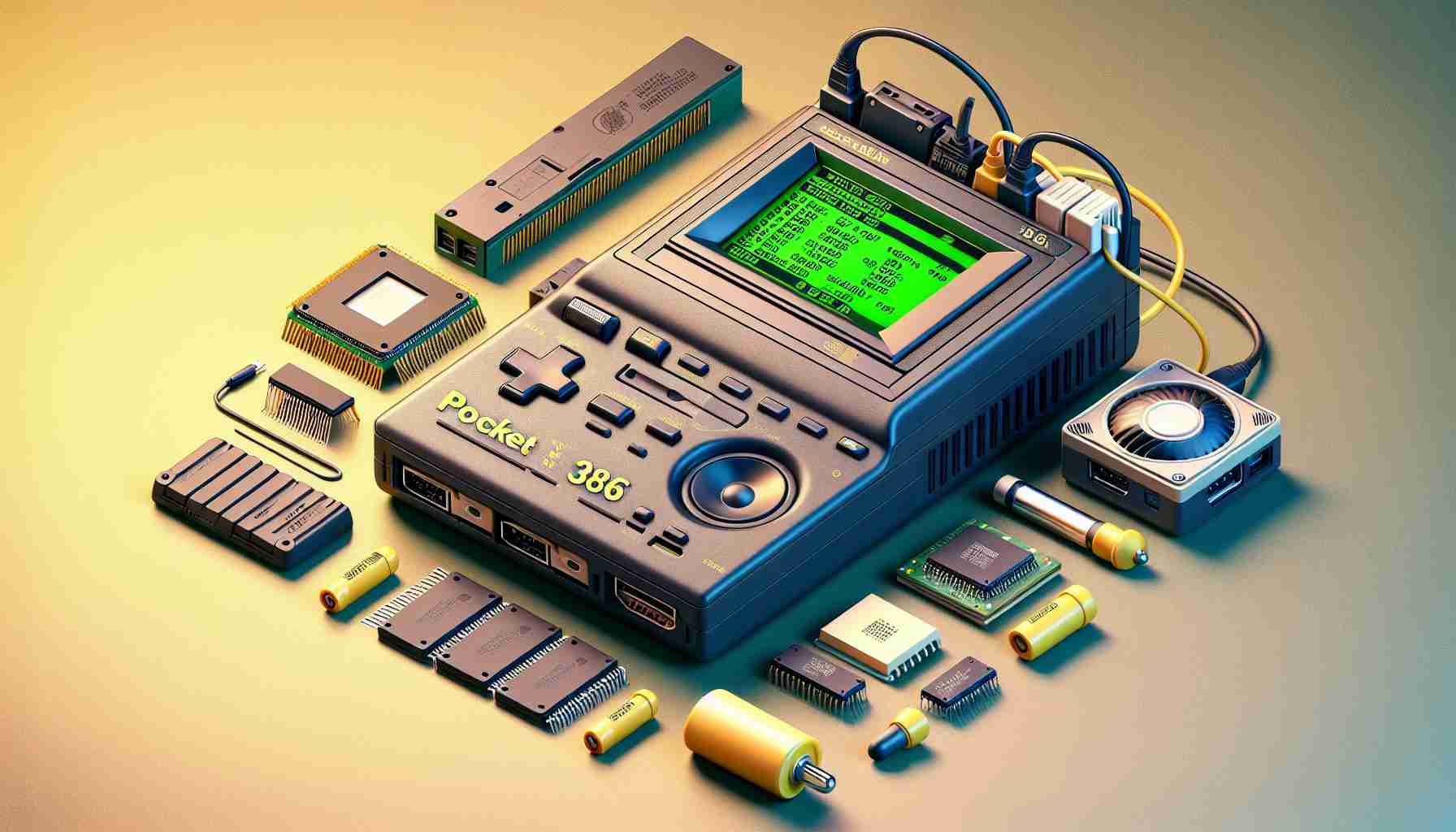The Pocket 386 laptop is revolutionizing the world of retro-computing. This compact device takes inspiration from the original Book 8088 but propels it into the next era of PC development. Equipped with Intel’s 80386 processors, the Pocket 386 offers enhanced capabilities and expanded software compatibility.
Unlike its predecessor, the Book 8088, the Pocket 386 utilizes the power of the 32-bit 80386 processors. This technological leap allows for greater memory capacity and improved compatibility with vintage software, including seminal versions of Windows. With this compact laptop, retro-computing enthusiasts can enjoy the convenience of a modern device without sacrificing the nostalgia of classic computing.
However, as with any innovative technology, there are some inherent challenges. The Pocket 386 experiences implementation problems that can be dealbreakers for some users. The device’s reliability and usability are compromised by certain issues, which become noticeably frustrating once the initial novelty wears off.
The 80386 processor is a significant upgrade from the original 8086, offering improved performance and expanded capabilities. With its 32-bit architecture, this CPU can theoretically access up to 4GB of RAM, making it suitable for vintage software applications. The introduction of protected mode and virtual memory enhances multitasking capabilities and allows for the use of graphical user interfaces.
The Pocket 386 employs the 80386SX variant, which, while slightly weaker than its DX counterpart, still offers impressive performance. This chip runs 32-bit software and can address up to 16MB of RAM. However, due to its utilization of a 16-bit external bus, its performance is limited compared to the 80386DX.
It’s important to note that the Pocket 386 utilizes a modified version of the 80386SX core, manufactured by Ali. This variation, known as the M6117C, was primarily intended for embedded systems, rather than consumer PCs. The choice of this CPU further sets the Pocket 386 apart from traditional retro-computing devices.
In conclusion, the Pocket 386 presents an exciting opportunity for retro-computing enthusiasts. With its powerful 80386 processor and expanded software compatibility, this device offers a unique and convenient solution for reliving the nostalgia of vintage computing. While there are certain implementation challenges that may hinder its usability, the Pocket 386 remains a significant milestone in the world of retro-computing.
Additional Facts:
– The Pocket 386 measures just 12 inches in length and weighs less than 3 pounds, making it highly portable and easy to carry around.
– It features a built-in keyboard and a compact LCD display, allowing users to have a full computing experience in a small form factor.
– The Pocket 386 includes a variety of connectivity options, such as USB ports, Ethernet, and VGA, enabling users to connect external devices and accessories.
– Despite its compact size, the Pocket 386 offers ample storage space with a built-in hard drive ranging from 40GB to 120GB.
– It is powered by a rechargeable battery, providing users with the flexibility to use the device on the go without being tethered to a power source.
Important Questions and Answers:
Q: How much memory can the Pocket 386 support?
A: The Pocket 386 can address up to 16MB of RAM, which is suitable for running vintage software applications.
Q: What are the implementation problems users may encounter with the Pocket 386?
A: Some users have reported reliability and usability issues with the device, which can be frustrating once the initial novelty wears off.
Key Challenges or Controversies:
– One key challenge associated with the Pocket 386 is the limited availability of compatible software. While it offers enhanced software compatibility, finding and installing vintage software that is compatible with the device may require effort and research.
– The choice of the modified version of the 80386SX core manufactured by Ali, primarily intended for embedded systems, has sparked some controversies among retro-computing enthusiasts. Some argue that it deviates from the authentic retro-computing experience.
Advantages:
– The Pocket 386 provides a convenient and portable solution for retro-computing enthusiasts who want to experience vintage computing without the need for multiple components.
– Its powerful 80386 processor and expanded software compatibility offer the ability to run a wide range of vintage applications, including classic versions of Windows.
– Despite its compact size, the Pocket 386 offers ample storage space and connectivity options, providing users with a complete retro-computing experience.
Disadvantages:
– Users may encounter implementation problems, including reliability and usability issues, which can hinder the overall experience with the Pocket 386.
– Finding and installing compatible software may be a challenge, as vintage software can be harder to come by and may require additional effort to locate and set up.
– The choice of the modified 80386SX core by Ali has raised concerns among some retro-computing enthusiasts who prefer a more authentic experience.
Related Links:
– Retro Computing Stack Exchange
– Vintage Computer Forum
– Old Computers


















